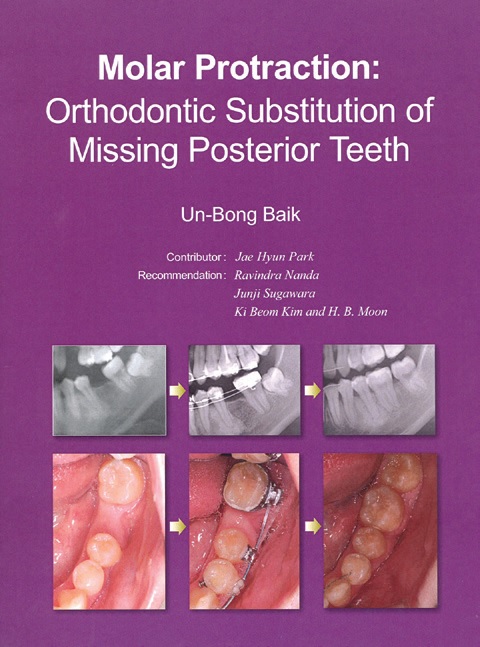BOOK REVIEWS
Molar Protraction: Orthodontic Substitution of Missing Posterior Teeth
UN-BONG BAIK, DDS, MD, PHD
235 pages. $130. 2012.
Self-published; available from Amazon.com.
Of particular interest to clinicians is the chapter on second and third-molar substitution for missing mandibular first molars, where the author presents five cases of increasing complexity, including a full-step Class II, division 1 malocclusion. Another intriguing chapter is the one titled "Factors of failure and failed cases", in which Dr. Baik modestly describes three challenging cases whose final results did not meet his high standards.
Throughout the book, the reader will find invaluable clinical pearls, including protraction on an .016" x .022" stainless steel wire, which is changed at every appointment to avoid distortion; extraction of maxillary first premolars for consolidation of mandibular first-molar space, allowing the development of a functional full-step Class II molar relationship; use of an occlusal-coverage maxillary retainer following mandibular space consolidation, preventing supraeruption of the maxillary second molar; and avoidance of protraction of a solitary mandibular second molar, which tends to be less stable in the absence of an adjacent third molar.
Similar articles from the archive:

Examining each beautiful case report, I found myself doubting whether I had the tools to treat any of these patients as well as the author had. My one complaint is that I wished to learn more from Dr. Baik. Questions remained regarding wire sequencing, use of elastics, activation of orthodontic implants, and whether dehiscences were formed, among others. What's the use of having front-row seats to the magic show if you can't figure out the tricks?
On the whole, however, Dr. Baik is a master clinician who proves that molar protraction through edentulous spaces, even in the lower arch, can be achieved predictably and relatively efficiently. His collection of cases and concise descriptions make for enjoyable reading that will not only leave you in awe, but provide you with a helpful visual aid the next time your patient asks, "Can't we just close this space?"
NEAL D. KRAVITZ, DMD, MS

